Edgar Degas was born in Paris. He bacame known as the master of drawing the human figure in motion. In the 1880's, Degas started to concentrate on intimate scenes, such as women bathing, shopping, or drying or combing their hair. He especially enjoyed painting pictures of race-track and theatrical life. But he composed his pictures carefully both for formal balance and to indicate the social interaction of his figures. He placed his figures at unusual angles and used odd visual viewpoints. Degas was a fine sculptor and made many clay or wax figurines. For example, he tilted his perspective to emphasize a sudden or informal movement by a figure.
He was really short tempered and was never happy with any of his artwork. He became interested in a ballet dancer. Degas' art reflects a concern for the psychology of movement and expression and the harmony of line and continuity of contour.
These characteristics set Degas apart from the other impressionist painters, even though he took part in all but one of the eight impressionist exhibitions between 1874 and 1886. Degas was the son of a wealthy banker, and his aristocratic family background instilled into his early art a haughty yet sensitive quality of detachment. As he grew up, his idol was the painter Jean Auguste Ingres, whose example pointed him in the direction of a classical draftsmanship, stressing balance and clarity of outline. In 1859, he painted portraits of his family and friends and a number of historical subjects, in which he combined classical and romantic styles. In the late 1860s he turned to contemporary themes, painting both theatrical scenes and portraits with a strong emphasis on the social and intellectual implications of props and setting.
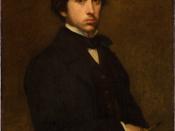
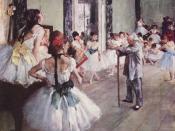
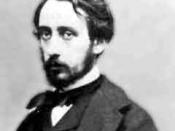
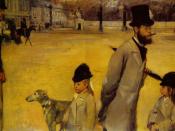
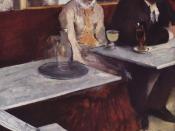
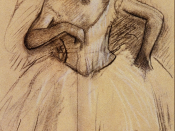
Short
This essay was too short and needs more information. You have the facts, but you should try to make this essay longer.
0 out of 0 people found this comment useful.